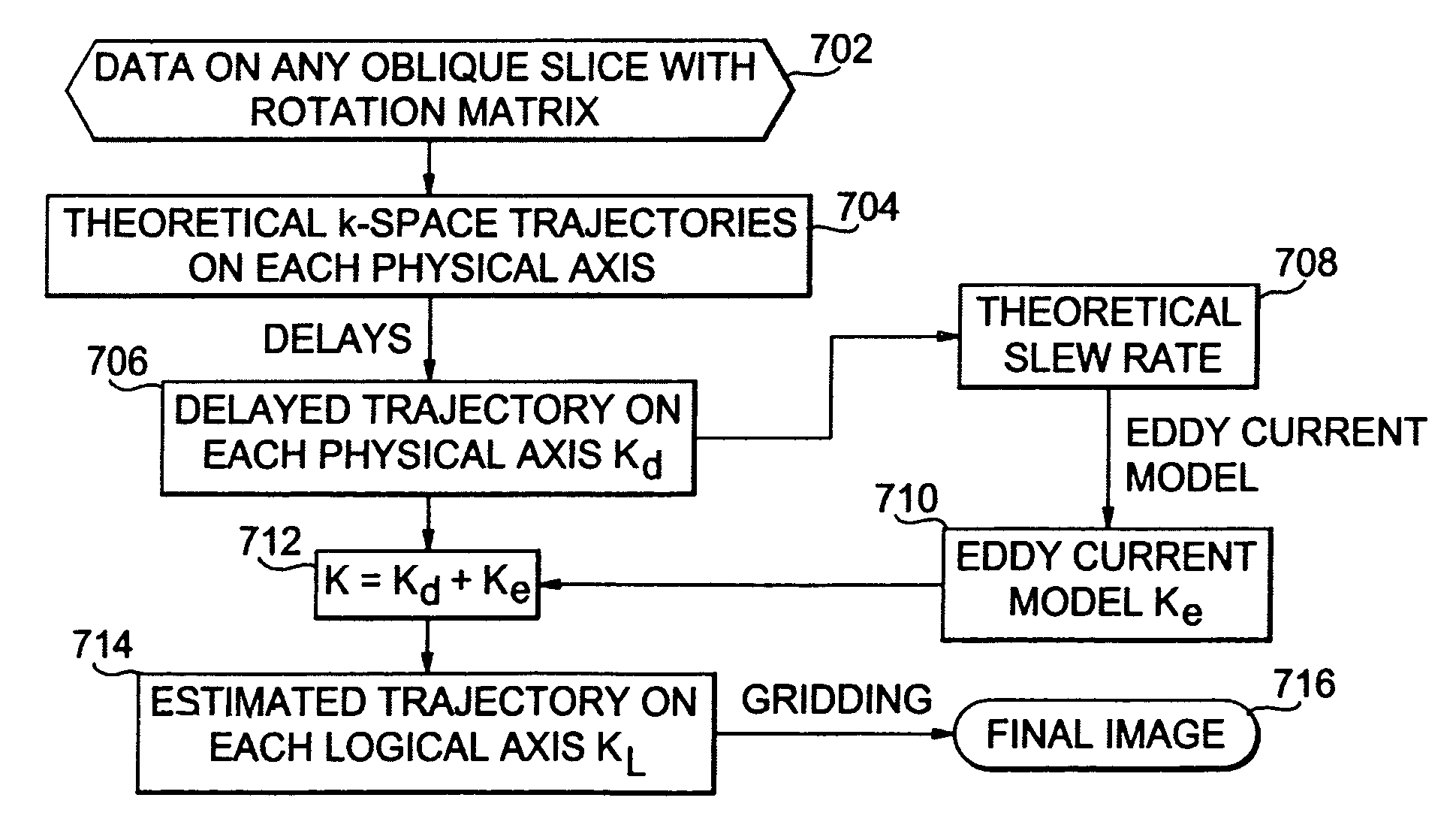K-space trajectory estimation in spiral MRI system and related method thereof
a spiral mri and trajectory technology, applied in the field of mr imaging, can solve the problems of severe image artifacts, inability to measure the k-space trajectory for each imaging slice, and inability to accurately reconstruct images, etc., to achieve the effect of simple and effective, reducing the root mean square error (rmse) and peak error in phantom images reconstructed using the proposed method
- Summary
- Abstract
- Description
- Claims
- Application Information
AI Technical Summary
Benefits of technology
Problems solved by technology
Method used
Image
Examples
Embodiment Construction
[0016]A preferred embodiment of the present invention will now be set forth in detail with reference to the drawings.
[0017]First, we collect data on two thin slices offset symmetrically around isocenter for coronal, sagittal and transverse views. The B0 eddy currents are then measured using the method proposed by Gurney et al. [P. Gurney, J. Pauly, D. G. Nishimura, “a simple method for measuring B0 eddy currents”, Proc. ISMRM, 13: 866 (2005)] and deducted from the corresponding phase term. Dividing the corrected signal phase by the slice distance, we get the measured k-space trajectories Kb in each view for calibration purposes. Dividing the corrected signal phase by the slice distance, we get the actual k-space trajectories Kb on each physical gradient axis in each view as follows for calibration purposes:
Kb=[(P+)(g+)−P+(g−))−(P−(g+)−P−(g−))] / (4D)
[0018]where P±( ) are the phase terms in two symmetrical slices; g± are the gradient waveform to be tested and its inverted version; D is...
PUM
 Login to View More
Login to View More Abstract
Description
Claims
Application Information
 Login to View More
Login to View More - R&D
- Intellectual Property
- Life Sciences
- Materials
- Tech Scout
- Unparalleled Data Quality
- Higher Quality Content
- 60% Fewer Hallucinations
Browse by: Latest US Patents, China's latest patents, Technical Efficacy Thesaurus, Application Domain, Technology Topic, Popular Technical Reports.
© 2025 PatSnap. All rights reserved.Legal|Privacy policy|Modern Slavery Act Transparency Statement|Sitemap|About US| Contact US: help@patsnap.com



